Thursday (and I’m just now getting around to blogging this… how sad is that?) we went on a field trip with members of our local co-op to a Cotton Gin. It was fun!
We really started Wednesday, when mom got this lapbook on Eli Whitney from the HomeshoolEstore. We learned a little bit of information about the man Wednesday, to get us ready for the trip on Thursday.
Then we went to go see it in action. We almost got lost, but Mom followed the trail of cotton down the side of the road, and sure enough it lead to the right place. *S*
The guide was great. A little above most of the smaller kids who were there, but I think the parents had more questions then the kids did anyway! He talked about how the plant grows, and the machine they use to pick it now, and then showed (from a window above the gin) how the machine worked. There have been vast improvements to the technology since Whitney’s day.
Back then, the slaves had to pick the stuff, and the gin was pretty much a bunch of wire teeth that ran through the cotton picking out the seeds. Today, there is a machine that picks the cotton, and loads it into a module. The trucks pick up the modules, and bring them to the gin. the cotton is then run through a vacuum of sorts, which fluffs the cotton enough to separate the bits of trash from the cotton. Then it runs through a dryer, and into the gin itself. After the gin, it gets cleaned, and there is a camera taking pictures every 15 seconds that allow the operators to determine if the cotton needs to be cleaned again. The less cleaning the better. Farmers get paid by the pound, and cleaning strips weight. Then it goes over to the press where it is smashed down into a bale. The machine spins and starts to load another bale, and the workers have 2 minutes to get wires around the first bale and get it out of the machine (not as easy as it sounds!). Each bale is given a number, and samples are taken to send to the government.
Awesome fun fact – Everything that comes out of the Gin is used. The cotton, obviously, sold to make cottony things with. The seeds, sold to plant more, or to make cotton seed oil. The garbage cotton, stuff that is too short to be of any use to most manufacturers, goes to fill furniture and make q-tips, that kind of thing. Even the trash is used, as compost for future crops, or as feed for the local farmers cows. Its really pretty awesome when you think about it.
Oh, and!! Another awesome fun fact – Did you know that they can trace your shirt back to the farmer who grew it? The US Government apparently has strict quality controls over the cotton. The bale numbers are used to track it no matter where it goes. Using that number, which is placed on the tag of the shirt somehow, your shirt can be traced back the gin that ginned it. The gin can tell you which farmer grew it. That way, there can be no hanky panky, and messing with the product, because they will find you. Pretty awesome huh?
Anyway, the kids had a blast. They got to take home a few seeds, and a handful of “dirty cotton” (seeds and all) and a handful of “clean cotton.” They loved getting to touch and feel and everything. Both GeekBoy and PinkDiva said that getting to take some seeds was their favorite part. LilChicano gave me this quote,
“The cotton gin always get me freakin’ out!”
Too cute. Here are some pictures from our trip. Ignore the big white spots. Apparently that’s what happens when you give a 6 year old a camera, and forget to clean the lens when he’s done. *S* (He helped me shoot the wedding. I’m working my way through the photos and will be posting his on my other blog soon.)
Enjoy!
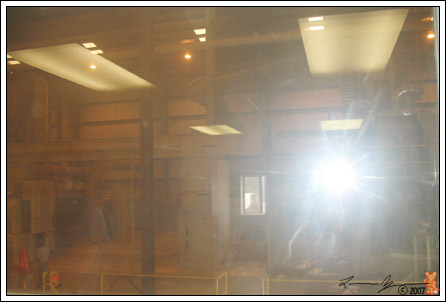
View from the window above the gin. Great flash, I know. *S
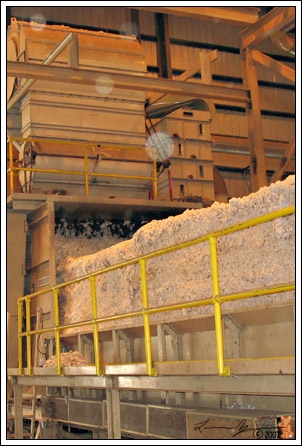
The cotton, being sucked into the dryer while the trash is blown outside.
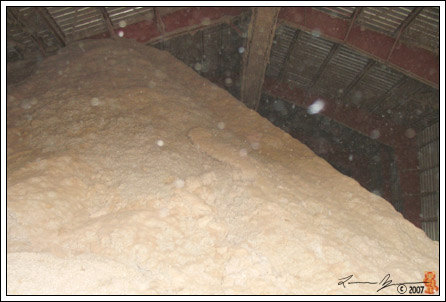
The seed shed.
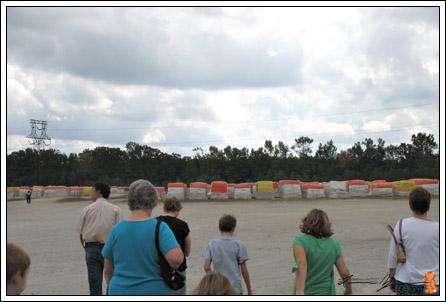
Modules all in a row.
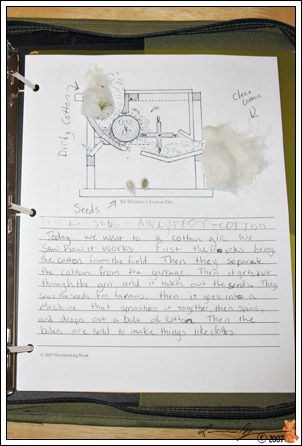
GeekBoy’s write up afterward. See! We glued the seeds and taped some cotton samples to the Gin diagram! How awesome is that?

Awesome! There’s a Cotton Museum in Central Texas that I have been wanting to visit forever. You’ve inspired me. Now if I could only gather up the gas money! 🙂
Wow, what a neat experience! We don’t have anything like that here. How cool to be able to see it up close and personal. I didn’t know they made such good use of every part of the cotton, either.
Thanks for sharing.